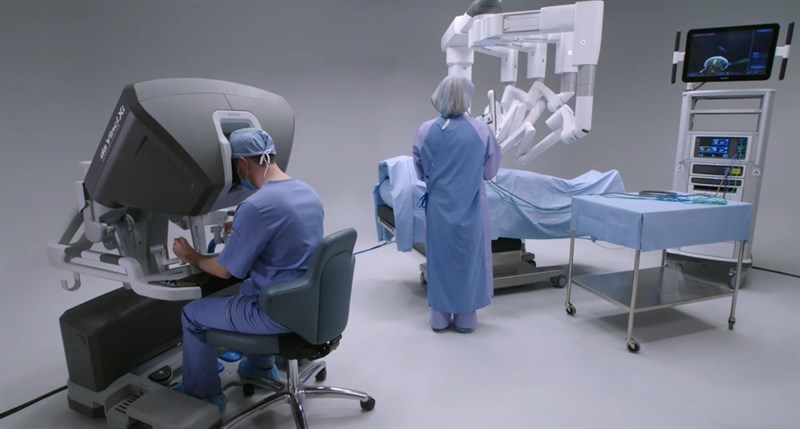Operating Room Insourcing Versus Outsourcing Post COVID-19
Jun. 12 2020, surgicaladmin

By Alyssa Rapp, CEO, Surgical Solutions
and Anand Christopher, Managing Partner, Claremont Hudson
INTRODUCTION
In March 2020, the COVID-19 pandemic created unprecedented disruption across the healthcare landscape and beyond. Many physician practices have stopped seeing patients inperson
while hospitals face growing patient volumes in ICUs and a shortage of personal protective equipment (PPE) and ventilators. Elective surgeries have been postponed or cancelled leaving many hospitals financially challenged as a key source of income has been frozen.
Health systems like Tenet Healthcare are preparing to resume some surgeries in certain states, and HCA Healthcare expects to reopen across its 43 markets by the end of June 2020. California is working with health-care providers to resume postponed procedures as well.i According to a survey conducted by American Medical Group Association (AMGA), two-thirds of health systems report that their portion of payments from the Coronavirus Aid, Relief, and Economic Security (CARES) Act, signed into law on March 27, will replace less than one week of revenue lost due to the COVID-19 pandemic. The CARES Act allocated $100 billion to healthcare providers, but AMGA estimates that it will take as much as $318 billion to replace just half of the revenue hospitals and physicians will lose over four months, leaving many providers with greatly diminished cash reserves.ii As states and the federal government take different approaches to reopening the economy, health systems face more challenges ahead. Given the extraordinary level of uncertainty, health systems are re-evaluating operations and developing new short- and long-term strategies to ensure economic sustainability.
KEY TRENDS IN THE CURRENT ENVIRONMENT
Trend #1: Health systems are freezing capital expenditures and reducing expenses. In response to COVID-19, health systems are conserving cash by reducing capital expenditures, IT, marketing and HR expenses. For-profit healthcare systems have also suspended share buybacks and dividend payments. 84% of healthcare systems have furloughed employees and 75% have cut physician salaries.iii The pandemic has been particularly difficult for health systems as revenues have fallen while some expense categories have increased. For example, Spectrum Health has spent more on PPE in one month than it would typically spend in one year, while surgery cancellations in that same period represented a multi-million dollar revenue reduction.iv Spectrum, like other health systems, has had to take stark measures to lower costs including reducing executive compensation, eliminating retirement plan matching
contributions, among others.
Health systems are still expecting to lose an average of $1,200 (and potentially up to $8,000 depending on payer mix) per COVID-19 case, in spite of the CARES Act’s Medicare reimbursement increase for COVID-19 cases. Unusually high costs for COVID-19 patients are driven by the intense level of care required including expanded cleaning regimens, more frequent X-rays / CT scans and higher drug costs.v In spite of cost reductions many health systems are facing a significant cash crunch. Sinai Health System, a Chicago-based safety net provider, is facing a $10 million monthly cash shortfall due to an overwhelming number of COVID-19 patients and the cancellation of elective surgeries and outpatient visits.vi The Illinois Health and Hospital Association estimates that Illinois hospitals are losing about $1.4 billion a month.vii
Trend #2: Health systems and ASCs are preparing for a surge in elective surgery once lockdowns are lifted. The freeze on elective surgeries has resulted in a growing backlog of cases. Fortunately, elective surgeries are part of the initial phase of the federal government’s three-step approach to reopen the country. Outpatient operating rooms (OR) can resume surgeries in states that show a downward trajectory of confirmed COVID-19 cases within a 14- day period.viii The approach taken to restore elective surgeries depends on a hospital’s OR capacity as well as availability of alternative sites of care. In theory, hospitals should prioritize elective surgeries based on objective measures such as the recently devised Medically Necessary Time-Sensitive Scoring (MeNTS) but scheduling will likely vary based on available resources, capabilities and business priorities. Hospitals need to closely monitor system capacity across multiple departments including peri-anesthesia units, critical care, emergency, diagnostic imaging, and laboratory services. OR schedules will likely expand to accommodate the anticipated spike in case volume, assuming no labor shortage. Changes could include limiting block time assignments to increase open time, and extending hours of elective procedures later into evenings and weekends. Additional equipment may be needed to expand capacity for specific procedures. Scheduling cases based on priority and grouping similar cases together may increase OR efficiency.ix While pent up demand will no doubt create a surge in surgical volume, some patients will inevitably reconsider their options if they fear being infected by the corona virus. Additionally, with unemployment rising, the uninsured rate will materially increase which could impact future demand for elective surgeries and may drive volume to safety net hospitals given their focus on uninsured patients.
Trend #3: Surgical volume is shifting from health systems to ambulatory surgery centers (ASCs) and that will likely be accelerated with the expected post-pandemic surge in elective surgeries. ASCs offer high quality outpatient care at a lower cost relative to health systems. A Health Affairs study discovered that procedures performed in ASCs are more efficient (adjusting for procedure type and patient characteristics), taking 25% less time than those performed in hospitals – leading to savings of $363 – $1,000 per case and also have lower fixed costs.x Many hospitals face challenges with scheduling delays, limited operating room capacities, budgetary issues and inefficient operating room turnovers. With advancements in medical technology, many surgical techniques are less invasive, such as arthroscopy, allowing for a significant number of historically inpatient procedures to now be done on an outpatient basis. For example, 32% of total joint replacements in 2020 are expected to be performed on an outpatient basis, up from 15% in 2017. This uptick has been fueled by lower costs, insurance coverage expansion, the shift to value-based care and strong patient outcomes in outpatient settings. On average, outpatient surgery cost $11,677 compared to inpatient surgery cost of $19,361.xi ASCs have helped Medicare, Medicaid, private insurers and patients achieve lower healthcare costs. Lower ASC costs mean that sterile processing and OR technicians are typically paid less than their health system counterparts granted ASCs tend to have shorter operating hours with clinicians not having to work weekends or take calls (resulting in less overtime payments). As procedure volumes surge, ASCs may have to expand hours and will likely be short staffed and struggle to hire appropriate technician support.
According to the Ambulatory Surgery Center Association (ASCA), Medicare saves in excess of $2.6 billion annually on lower cost ASC procedures, and Medicare is expected to save nearly $58 billion over the next decade as the 65-and-older population continues to grow. Insurers are increasingly steering patients to ASCs given these savings; ASCs are reimbursed at about 55% of the rate hospital outpatient departments are reimbursed for similar procedures. For example, Blue Cross Blue Shield of Minnesota recently announced it will only pay for colonoscopies and endoscopies at in-network ASCs and will only pay for the procedures in hospital outpatient departments if the patient lived farther than 25 miles from the nearest ASC.xii Furthermore, payers pay bonuses to primary care physicians that refer patients to ASCs. To capture outpatient volume growth, providers and payers have entered into joint ventures and M&A. Recent examples include UnitedHealth Group’s acquisition of Surgical Care Affiliates, Envision Healthcare Corporation’s merger with AmSurg and the joint venture between United Surgical Partners International and Tenet Healthcare. Still, the ASC market is highly fragmented and will take time to further consolidate. In 2019, the four largest ASC management companies accounted for less than 15% of the total estimated ASC market in the US.xiii
COST MANAGEMENT
In the midst of the volatility created by COVID-19, health systems and ASCs alike are challenged with managing costs effectively. Surgical care accounts for nearly one-third of all US health care spending, and monitoring OR costs is critical.xiv Furthermore, the OR accounts for 40% of total hospital expenses and a disproportionately high portion of hospital revenue of 70%.xv Recent research published in the Journal of the American Medical Association (JAMA) estimates the cost per OR minute across California hospitals was $37.45 in an inpatient setting compared to $36.14 in an ambulatory setting excluding supplies billed to a patient such as implants and anesthesia xvi (another study of 100 US hospitals showed a wide range of $22 to $133 per OR minute xvii). Direct expenses accounted for 54.6% of total expenses in inpatient settings versus 59.1% of total expenses in the ambulatory setting. Wages and benefits account for approximately two-thirds of total direct expenses, with nonbillable supplies (such as such as sutures, needles and packs) accounting for less than 10% of total expenses.xviii These estimates no doubt vary across health providers and geographies that incorporate different cost categories. Indirect costs reflect cost allocations across the health system such as parking and security. While these indirect costs are outside the scope of clinicians and department managers, there is opportunity to influence direct costs such as labor and supplies. The ability of an OR to reduce down time and schedule additional cases presents opportunity for greater efficiency and additional case revenue.
It is estimated that aggregate laparoscopy, endoscopy and specialty procedure volumes have declined by over 70% during the pandemic and will surge significantly once elective surgeries resume. This dramatic decline in volume has exacerbated challenges in managing OR staff and equipment. Healthcare providers have the option of buying, leasing or having a third-party manage their equipment. New accounting standards for lease arrangements require health institutions to capitalize leases with terms over twelve months on their balance sheets – limiting off-balance sheet financing via traditional operating leases.xix Hospitals will need to rethink their buy versus lease decisions. One of the leading health systems, HCA Healthcare, owns much of its equipment and has nearly $26 billion, or approximately 57% of its total asset base, invested in equipment. This heavy investment in equipment results in substantially underutilized equipment when surgical volumes dip.
Not all health systems have excess equipment; many actually have outdated or obsolete equipment. The total cost of ownership is even higher when considering repair costs of aging equipment. With capital spending frozen at many health systems, buying equipment is no longer an option. Leasing and third-party management of equipment and repairs is more affordable for cash-strapped hospitals. As revenue fluctuates, healthcare providers need to reevaluate spending and ensure that cost structure is aligned with their revenue. Furthermore, physician satisfaction tends to me much higher when equipment is newer, and physicians are inclined to take their cases to these modernized facilities.
Salaries and benefits account for nearly $24 billion or approximately 46% of HCA Healthcare’s total 2019 expenses (as a percent of total revenue). A variable staffing structure would allow health systems and ASCs to serve varying surgical volume with greater flexibility (provided that experienced staff could be adequately flexed up and down in a reliable fashion). During the pandemic, OR staff that are not on eFMLA or furlough have been redeployed in other areas: ICU, screening and assessing patients. These functions will continue to need extra support when surgery ramps up, plus hospital staff will be required to do advance COVID-19 testing anywhere from 24 – 72 hours prior to surgery and then rapid testing at time of surgery; this all requires additional staffing support.
Another challenge many health systems face is managing costs across multiple budgets and jurisdictions within the organization. Equipment is often managed by multiple departments including biomedical engineering, surgical services, sterile processing and the OR. With equipment costs spread out, the total cost picture becomes obscured, and there is no roadmap to collectively manage all of the equipment, repairs and service needs. In many cases, hospitals do not have a singular administrator accountable for managing, repairing and tracking equipment – leading to inefficiencies, physician dissatisfaction and sub-optimal outcomes. A third-party equipment and repairs management service can provide clarity on total equipment costs facilitating asset optimization, improved long-term forecast visibility, greater cost accountability and an increased OR utilization.
The emerging outsourced model where third parties such as OEMs or other surgical support companies manage equipment, repairs and technician support for a fixed fee per case is gaining market acceptance. This model allows OR clinicians to focus on the patient improving both clinician and patient experience while the third party manages all equipment needs. A fixed fee per procedure arrangement would result in tremendous savings when case volumes decline as they have during the 2020 pandemic. This also allows health systems to reduce capital expenditures and to better match supply and demand of equipment and technician support. Furthermore, this outsourced model allows for less downtime between surgeries and greater OR throughput.
CONCLUSION
The goal of any health system should be to deliver the highest quality care leading to the best possible outcomes for the patient. It is possible to achieve this while simultaneously lowering costs and improving both the clinician and patient experience. This requires appropriate division of labor and a team of expert technicians to manage scopes, trays, disposables, repairs, etc. CMS withholds 2% of Medicare payments to fund value-based incentives payments to hospitals measured on efficiency, safety, quality clinical care and patient / provider experience. The clinician experience is notably improved when they are not overly burdened with managing equipment, and happier and more productive clinicians translates to a much better patient experience (and potentially more business directed to that hospital by a given physician).
As healthcare increasingly shifts to value based care and capitated payment models, health systems and ASCs are incentivized to more closely manage OR costs. With the US spending nearly 20% of GDP on healthcare, far higher than any other industrialized nation, there are clear opportunities to make the healthcare system more efficient and cost effective. As mentioned, surgical care accounts for nearly one-third of all US health care spending. Reducing OR costs clearly has the potential to substantially impact our overall healthcare spend. To do so, healthcare leaders will have to think differently about managing OR equipment and labor in
order to achieve operational efficiencies and improve outcomes.
REFERENCES
i “Hospitals Aim to Resume Procedures Postponed by Coronavirus” Wall Street Journal, April 22, 2020.
[https://www.wsj.com/articles/hospitals-aim-to-resume-procedures-postponed-by-coronavirus-
11587568784?mod=searchresults&page=1&pos=4]
ii “Medical Groups and Integrated Health Systems Face Closure Without Immediate Financial Relief; Initial CARES
Act Fund Covered Less than a Week of Lost Revenue” AGMA, April 21, 2020. [https://www.amga.org/aboutamga/
amga-newsroom/press-releases/medical-group-health-system-funding-covid19/?mod=article_inline]
iii “Medical Groups and Integrated Health Systems Face Closure Without Immediate Financial Relief; Initial CARES
Act Fund Covered Less than a Week of Lost Revenue” AGMA, April 21, 2020. [https://www.amga.org/aboutamga/
amga-newsroom/press-releases/medical-group-health-system-funding-covid19/?mod=article_inline]
iv “Spectrum Health joins list of hospitals taking steps to reduce costs during COVID-19” Up Live North News, April
17, 2020. [https://upnorthlive.com/news/local/spectrum-health-joins-list-of-hospitals-taking-steps-to-reducecosts-
during-covid-19]
v “Hospitals face massive losses on COVID-19 cases even with proposed increase in federal reimbursement” Strata
Decision Technology, March 24, 2020. [https://www.stratadecision.com/blog/report-hospitals-face-massivelosses-
on-covid-19-cases-even-with-proposed-increase-in-federal-reimbursement/]
vi “Busy, yet struggling: Illinois hospitals lose $1.4 billion a month as coronavirus cancels surgeries” Chicago
Tribune, April 17, 2020. [https://www.chicagotribune.com/coronavirus/ct-coronavirus-illinois-hospitals-financialdamage-
furloughs-20200417-w3mzywqx2vdprb5bj33h57clba-story.html]
vii “Busy, yet struggling: Illinois hospitals lose $1.4 billion a month as coronavirus cancels surgeries” Chicago
Tribune, April 17, 2020. [https://www.chicagotribune.com/coronavirus/ct-coronavirus-illinois-hospitals-financialdamage-
furloughs-20200417-w3mzywqx2vdprb5bj33h57clba-story.html]
viii “Outpatient ORs Reopening for Business” Outpatient Surgery, April 18, 2020.
[http://www.outpatientsurgery.net/surgical-facility-administration/legal-and-regulatory/outpatient-orsreopening-
for-business–04-18-20]
ix “Local Resumption of Elective Surgery Guidance” American College of Surgeons, April 17, 2020.
[https://www.facs.org/covid-19/clinical-guidance/resuming-elective-surgery]
x “Procedures Take Less Time At Ambulatory Surgery Centers, Keeping Costs Down And Ability To Meet Demand
Up” Health Affairs, May 2014. [https://www.healthaffairs.org/doi/full/10.1377/hlthaff.2013.1281]
xi “10 things to know about total joint replacement in ASCs for 2019” Becker’s ASC Review, March 26, 2019.
[https://www.beckersasc.com/orthopedics-tjr/10-things-to-know-about-total-joint-replacement-in-ascs-for-
2019.html]
xii “Insurers, hospitals clash over service shift to ASCs” Becker’s ASC Review, January 13, 2020.
[https://www.beckersasc.com/asc-coding-billing-and-collections/insurers-hospitals-clash-over-service-shift-toascs.
html]
xiii IBISWorld Industry Report: Ambulatory Surgery Centers in the US. August 2019
xiv ” Understanding Costs of Care in the Operating Room” JAMA, February 28, 2018.
[https://www.ncbi.nlm.nih.gov/pmc/articles/PMC5875376/]
xv “OR Costs: Labor vs Materials” OpenAnesthesia.
[https://www.openanesthesia.org/or_costs_labor_vs_materials/]
xvi ” Understanding Costs of Care in the Operating Room” JAMA, February 28, 2018.
[https://www.ncbi.nlm.nih.gov/pmc/articles/PMC5875376/]
xvii “What does one minute of operating room time cost?” Journal of Clinical Anesthesia, 2010.
xviii ” Understanding Costs of Care in the Operating Room” JAMA, February 28, 2018.
[https://www.ncbi.nlm.nih.gov/pmc/articles/PMC5875376/]
xix “New Lease Accounting Standards and Its Impact on Health Care Entities” CitrinCooperman August 8, 2018.
[https://www.citrincooperman.com/infocus/new-lease-accounting-standards-and-its-impact-on-health-careentities-]
surgicaladmin
Administrator
RELATED POST
-

Robotic Surgery
What Is Robotic Surgery and How Does It Work?
Read More



